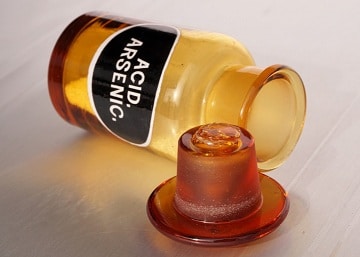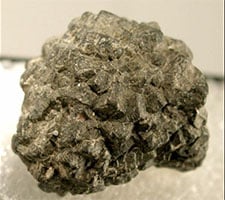 The Greek word arsenikón came to Latin as arsenĭcum , the closest etymological antecedent of the term arsenic . This is the name given to the chemical element whose atomic number is 33 and its symbol is As , characterized by its high level of toxicity .
The Greek word arsenikón came to Latin as arsenĭcum , the closest etymological antecedent of the term arsenic . This is the name given to the chemical element whose atomic number is 33 and its symbol is As , characterized by its high level of toxicity .
Arsenic has a scarce presence in the crust of our planet . Sometimes it appears in combination with sulfur and other times, in its native state. The idea of arsenic often refers specifically to arsenic acid , a water-soluble substance that is used to manufacture pesticides .
Various natural and human activities cause arsenic to be released into the environment. Mineral erosion, volcanic eruptions and various industrial processes cause arsenic to be present in soil, air and water .
Inorganic arsenic compounds are very toxic, while organic arsenic compounds are less harmful. According to specialists, exposure to inorganic arsenic can cause chronic poisoning, skin lesions and cancer .
There is a technical term to refer to this problem: arsenic poisoning , which can also be called arsenicism or arsenicosis . These are all those alterations that occur in a person's health due to the entry of arsenic into their body. This can take place both through its organic and inorganic compounds.
When water is contaminated with arsenic, people who drink it or use it to prepare food are at risk. Contaminated water can even affect crops.
Chemical elements can be divided into three categories based on their ionization and bonding properties: metals, nonmetals, and semimetals . Arsenic belongs to the latter, which is also known as metalloids . As it is present in nature, humans cannot avoid exposing themselves to it, whether by breathing, drinking or eating, and even by coming into contact with the ground.
Of course, arsenic comes in various forms, some of which do not have serious effects on our health. Going from most to least toxic, the list is as follows: arsine gas (also called arsane ), trivalent inorganic compounds, trivalent organic compounds, pentavalent inorganic compounds, pentavalent organic compounds, and elemental arsenic. We notice that the classification talks about its valence , the number of electrons it needs or must deliver so that its last energy level is complete.
At the beginning of the 20th century, a very serious event related to the ingestion of arsenic took place that has since served as a warning: as a result of the contamination of a batch of beer, more than six thousand English citizens suffered poisoning that led to seventy-one of them to death. Around one hundred breweries were affected by this oversight.
 The problem began when the sulfuric acid used to produce sugar from cane became contaminated with arsenic. The severity of the event would have been less if it had not been a product that was ingested but rather one that was inhaled or absorbed through the skin. Among the symptoms and signs that those affected presented were the following:
The problem began when the sulfuric acid used to produce sugar from cane became contaminated with arsenic. The severity of the event would have been less if it had not been a product that was ingested but rather one that was inhaled or absorbed through the skin. Among the symptoms and signs that those affected presented were the following:
* alterations in pigmentation, taking it to brown;
* anorexia;
* weakness and pain in the muscles;
* liver lesions;
* localized edema.
Beyond these issues, arsenic has quite widespread use. It appears in the manufacture of semiconductors , in wood preservatives, in the production of pyrotechnics and in the production of glass.
Medicine also often uses arsenic, although that trend is receding due to side effects. Certain types of chemotherapy , for example, are developed with arsenic.
